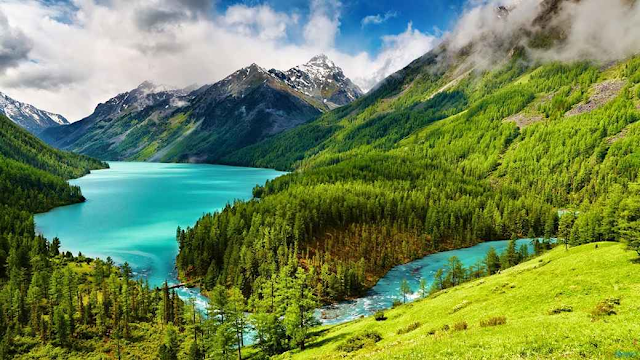From the Mountains to the Coast: Pakistan's Diverse Landscapes

Pakistan is a country with an incredibly diverse landscape. From the high peaks of the Himalayas to the sandy beaches of the Arabian Sea, Pakistan has a lot to offer to those who are interested in exploring different types of terrain. In this article, we will take a closer look at Pakistan's diverse landscapes, from the mountains to the coast.
Mountains
Pakistan is home to some of the highest mountains in the world, including K2, the second-highest peak on earth. The mountainous regions in Pakistan are known for their rugged beauty, breathtaking vistas, and adventure activities like mountaineering, trekking, and skiing. Some of the famous mountain ranges in Pakistan include the Karakoram, the Himalayas, and the Hindu Kush.
One of the most popular destinations in Pakistan's mountainous regions is Hunza, a small town located in the northern part of the country. Hunza is famous for its scenic beauty, rich cultural heritage, and adventure activities like hiking and mountain biking.
Deserts
Pakistan is also home to several deserts, including the Thar Desert and the Cholistan Desert. These deserts are characterized by their arid landscapes, sand dunes, and extreme temperatures. Despite the harsh conditions, the deserts in Pakistan are of significant cultural and historical importance. They are home to several ancient civilizations, including the Indus Valley Civilization, which flourished over 5,000 years ago.
The deserts in Pakistan also play an important role in the country's economy. They are a source of natural resources like oil and gas, and they support several industries like agriculture, livestock farming, and tourism.
Plains
Pakistan's plains regions are some of the most fertile in the world, making them an important agricultural hub. These regions are characterized by their flat landscapes, fertile soils, and moderate climate. Some of the famous plains regions in Pakistan include Punjab, Sindh, and Balochistan.
Tourists can also find several attractions in Pakistan's plains regions, including ancient ruins, historical sites, and traditional markets. The cities of Lahore and Multan, for example, are famous for their Mughal-era architecture, bazaars, and food.
Coastal Areas
Pakistan's coastal areas are another significant part of its diverse landscape. The coastline stretches over 1,000 km and is home to several sandy beaches, rocky cliffs, and mangrove forests. The coastal areas are also important for Pakistan's economy, with industries like fishing, shipping, and tourism being major contributors.
One of the most popular beach destinations in Pakistan is Karachi, the country's largest city and financial hub. Karachi is known for its vibrant culture, bustling markets, and historical landmarks like the Quaid-e-Azam's Mausoleum and Mohatta Palace.
Wildlife
Pakistan is home to a diverse range of flora and fauna, with several national parks and wildlife reserves dedicated to their conservation. The country's wildlife includes several endangered species like the snow leopard, the Himalayan brown bear, and the Indus dolphin.
One of the most famous national parks in Pakistan is the Khunjerab National Park, located in the northern part of the country. The park is home to several rare and endangered species like the Marco Polo sheep, the Tibetan wolf, and the Himalayan ibex.
Culture and Heritage
Pakistan's diverse landscape is not just limited to its natural beauty. The country is also home to a rich cultural heritage, with several famous cultural sites and landmarks. These include ancient ruins, historical monuments, and traditional bazaars.
One of the most famous cultural sites in Pakistan is the Mohenjo-daro archaeological site, located in the province of Sindh. The site is home to the ruins of an ancient Indus Valley Civilization city and is a UNESCO World Heritage Site.
Conclusion
In conclusion, Pakistan's diverse landscape offers a wide range of opportunities for exploration and adventure. From the rugged peaks of the Himalayas to the sandy beaches of the Arabian Sea, Pakistan has something for everyone. It is important to take the time to explore different regions of Pakistan and appreciate the unique beauty and culture of each






